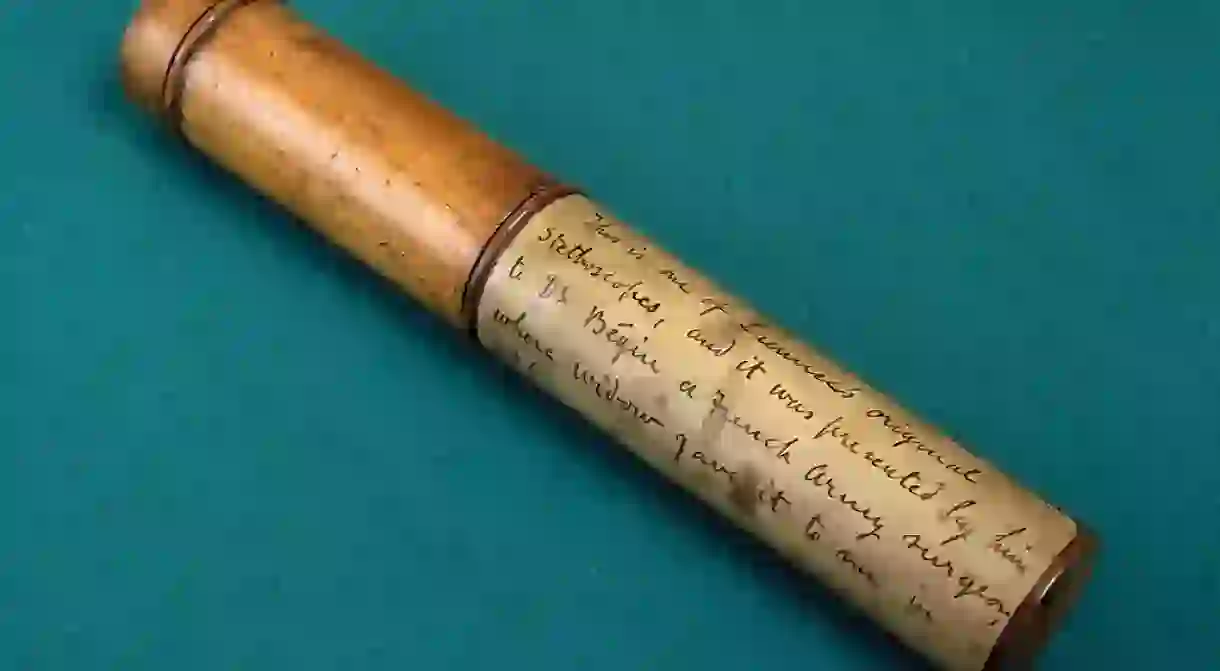9 Scientific Inventions You Didn't Know Were French

There are few countries with a scientific history as rich and as deep as France. Anyone who spent any time in a high school science class is unlikely to forget that Frenchman Louis Pasteur discovered the principles of vaccination, fermentation, and pasteurization, or that Marie Curie pioneered radioactivity research at La Sorbonne. However, there are many significant technological breakthroughs whose Frenchness might have passed you by. For starters, here are just nine!
The calculator by Blaise Pascal in 1642
The first attempt at a mechanized calculator was made by the German scholar Wilhelm Schickard between 1617 and 1624. He abandoned the project due to two faults in its design: the same digit could not be entered multiple times and calculations resulting in several digits changing at once (for example when 1 is added to 999) caused the machine to malfunction. Two decades later, Pascal solved these problems. His invention made life as a tax collector at his father’s business in Rouen much easier.

The modern pencil by Nicolas-Jacques Conté in 1795, and the pencil sharpener by Bernard Lassimone in 1828 and Thierry des Estivaux in 1847
During the Napoleonic Wars, exportation to France of early styles of English and German pencils was barred. As such, Conté, an army officer, was compelled to develop a new mixture of powdered graphite and clay that was then fired in a kiln to produce the lead pencil filling we still use today. Thirty-three years later, mathematician Bernard Lassimonne patented the first pencil sharpener – before then people had simply used a knife – but it took its recognizable form 19 years later with the appearance of Thierry des Estivaux’s model.

Canning by Nicolas Appert in 1809
Another offshoot of the Napoleonic Wars was the development of canning. The government offered a 12,000-franc reward to anyone who could figure out a means of feeding its expanding army through the seasons. Appert, a confectioner and brewer, realized that food cooked inside a jar did not spoil unless the seal was broken and so developed a method for sealing food inside jars. He used his prize money to build a factory, which was razed a mere four years later. After the war, his process was adopted across Europe and the United States.

The stethoscope by René Laennec in 1816
Laennec’s invention, which he developed while working at the Necker-Enfants Malades Hospital in Paris, was a product of his discomfort at having to place his head on women’s chests to register their heartbeats. The device, a simple wooden tube, was almost indistinguishable from the common ear trumpets of the day, which preceded the modern hearing aid. Today’s flexible version came about at some point over the next 25 years and was first described by Golding Bird, though its creator remains unknown.

Aspirin by Charles Frédéric Gerhardt in 1853
In 1763, the Oxford scientist Edward Stone isolated the active ingredient of aspirin in his discovery of salicylic acid. However, 90 years later, it was Gerhardt who first prepared the drug during a series of lively experiments involving acetyl chloride and sodium salicylate. When the mists cleared and the molten mixture finally solidified, it was aspirin that was on the table. This was just one of many compounds he created, and he did not pursue its use any further (to the great disappointment of his accountant, no doubt).

The bicycle by Pierre Michaux and Pierre Lallement in 1864
It is often claimed that the first two-wheeled vehicle was built by Scotsman Kirkpatrick MacMillan in 1839, but this is disputed. (He is also the subject of history’s first suspected bicycle-human collision.) Michaux and Lallement evolved bicycle design by adding a mechanical crank drive with pedals to a vehicle with an oversized front wheel, the velocipede. This started a wave of inventions on either side of the Channel, through which the modern bike took shape, with the Michaux model acting as a blueprint for emerging British manufacturers.

The hairdryer by Alexandre Godefroy in 1890
Godefroy was a French hair stylist who came up with a novel way of drying his clients’ hair. His creation was a large, helmet-like headset that was attached to the chimney pipe of a gas stove in his salon. The user had to sit beneath it patiently while they dried. The handheld blow dryer was patented 21 years later by the Armenian-American inventor Gabriel Kazanjian. However, versions of Godefroy’s model persisted well into the 20th century.

Sonar by Paul Langevin between 1916 and 1917
Before sonar came along, the first submarine that didn’t depend on human power for submergence was the French Plongeur, which was launched in 1863. Half a century later, World War I precipitated the need to detect enemy submarines in dark waters. While the British worked on underwater listening technologies, Langevin and his Russian colleague Constantin Chilowsky developed active sound devices which employed electrostatic transducers. Their designs were superseded by piezoelectric and magnetostrictive transducers but remained inspirational and influential to future inventors.

The camera phone by Philippe Kahn in 1997
In the years preceding Kahn’s invention, numerous companies and inventors had experimented with adding communication capability to video phones and cameras. However, none of these had taken off or included file sharing capabilities. On June 11, 1997, Kahn instant messaged a picture of his newborn daughter Sophie to 2,000 of his family members, friends, and colleagues around the world – the first ever image to be shared via a cell phone. His wireless sharing software and integrated cell phone camera beckoned a new era of visual communication.














